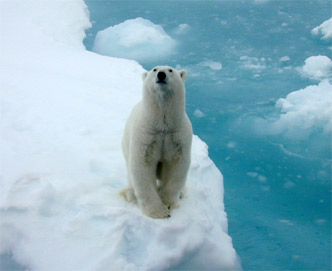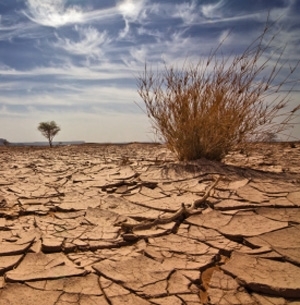International Environmental Issues
International Environmental Issues
Climate change, biodiversity loss, deforestation and air and water pollution are not confined by human-imposed boundaries as waterways, watersheds, oceans, biodiversity, ecosystems and the atmosphere tend to span countries, continents or the globe.
Perhaps the most ubiquitous international environmental issue is climate change. Climate change cooperation has been stalled by North-South contentions surrounding inequalities, the right to development, financial support, technology transfer and the ability of the world’s most vulnerable nations to adapt.
Moreover, in a highly globalized world, raw materials, finished goods and waste are transported across nations and continents. Often times resulting in environmental degradation and pollution throughout the entire life cycle of a product or process.
The demand for a good in one country can result in environmental degradation of another country. For example, the demand for timber or agricultural products in the United States can cause rampant deforestation in tropical regions. Also, the excessive consumption of electronic devices such as cell phones or laptops generates thousands of tons of electronic waste (e-waste), which contains heavy metals and other toxic materials. E-waste generated by developed nations is often exported to countries such as China, India or other places with lax environmental laws and enforcement.
The realization that environmental issues are more often than not of transboundary nature requires international collaboration and cooperation. As a result, numerous international agreements have entered into force in the hopes of fostering a concerted effort in addressing some of the most pressing problems. Some of the most widely known international environmental agreements include the Montreal Protocol on Substances that Deplete the Ozone Layer, the Kyoto Protocol, CITES (Convention on International Trade of Endangered Species of Wild Fauna and Flora), and the Basel Convention on the Control of Transboundary Movements of Hazardous Wastes and their Disposal.
-
 Featured Article
Featured Article  Africa (collection) (International Environmental Issues)Welcome to the Africa Collection! This new collection is centered on the environmental, economic and social challenges faced by the people of Africa. The goal of this collection... More »
Africa (collection) (International Environmental Issues)Welcome to the Africa Collection! This new collection is centered on the environmental, economic and social challenges faced by the people of Africa. The goal of this collection... More »
-
 Featured Article
Featured Article  North American Environmental Outlook to 2030This report summarizes recent research concerning the major forces and underlying trends that are likely to shape the environment of North America in 2030. The... More »
North American Environmental Outlook to 2030This report summarizes recent research concerning the major forces and underlying trends that are likely to shape the environment of North America in 2030. The... More »
-
 Featured Article
Featured Article  The North American MosaicAn Overview of Key Environmental Issues The North American Agreement on Environmental Cooperation obliges the Secretariat of the Commission for Environmental Cooperation to... More »
The North American MosaicAn Overview of Key Environmental Issues The North American Agreement on Environmental Cooperation obliges the Secretariat of the Commission for Environmental Cooperation to... More »
-
 Featured Article
Featured Article  Tokelau (International Environmental Issues)Tokelau is group of three low-lying coral atolls (Atafu, Fakaofo, Nukunonu) enclosing large lagoons in the South Pacific Ocean, about one-half of the way from Hawaii to New... More »
Tokelau (International Environmental Issues)Tokelau is group of three low-lying coral atolls (Atafu, Fakaofo, Nukunonu) enclosing large lagoons in the South Pacific Ocean, about one-half of the way from Hawaii to New... More »
 Ecosystems and Human Well-Being: Volume 1: Current State and Trends: Air Quality and Climate Last Updated on 2014-11-17 12:15:25 This is Chapter 13 of the Millenium Ecosystem Assessment report Ecosystems and Human Well-Being: Volume 1: Current State and Trends Coordinating Lead Authors: Jo House, Victor Brovkin Lead Authors: Richard Betts, Bob Constanza, Maria Assunçao Silva Dias, Beth Holland, Corinne Le Quéré, Nophea Kim Phat, Ulf Riebesell, Mary Scholes Contributing Authors: Almut Arneth, Damian Barratt, Ken Cassman, Torben Christensen, Sarah Cornell, Jon Foley, Laurens Ganzeveld, Thomas Hickler, Sander Houweling, Marko Scholze, Fortunat Joos, Karen Kohfeld, Manfredi Manizza, Denis Ojima, I. Colin Prentice, Crystal Schaaf, Ben Smith, Ina Tegen, Kirsten Thonicke, Nicola Warwick Review Editors: Pavel Kabat, Shuzo Nishioka Main Messages Ecosystems, both natural and managed, exert a strong influence on climate and air quality. Ecosystems are both sources and sinks of greenhouse gases,... More »
Ecosystems and Human Well-Being: Volume 1: Current State and Trends: Air Quality and Climate Last Updated on 2014-11-17 12:15:25 This is Chapter 13 of the Millenium Ecosystem Assessment report Ecosystems and Human Well-Being: Volume 1: Current State and Trends Coordinating Lead Authors: Jo House, Victor Brovkin Lead Authors: Richard Betts, Bob Constanza, Maria Assunçao Silva Dias, Beth Holland, Corinne Le Quéré, Nophea Kim Phat, Ulf Riebesell, Mary Scholes Contributing Authors: Almut Arneth, Damian Barratt, Ken Cassman, Torben Christensen, Sarah Cornell, Jon Foley, Laurens Ganzeveld, Thomas Hickler, Sander Houweling, Marko Scholze, Fortunat Joos, Karen Kohfeld, Manfredi Manizza, Denis Ojima, I. Colin Prentice, Crystal Schaaf, Ben Smith, Ina Tegen, Kirsten Thonicke, Nicola Warwick Review Editors: Pavel Kabat, Shuzo Nishioka Main Messages Ecosystems, both natural and managed, exert a strong influence on climate and air quality. Ecosystems are both sources and sinks of greenhouse gases,... More »  Climate change (International Environmental Issues) Last Updated on 2014-11-15 14:23:07 Editor's Note: This article was compiled and edited by Mohan Munasinghe, Cutler J. Cleveland, and Laura De Angelo. In the interests of maintaining scientific accuracy, this article is derived directly from material in the Synthesis Report and the Technical Summary of Working Group I, "The Physical Science Basis," of the Fourth Assessment Report of the Intergovernmental Panel on Climate Change (IPCC). The full Synthesis Report and Technical Summary are reproduced in this Encyclopedia, and are available in their original PDF forms at the IPCC web site. The relevant IPCC Lead Authors are listed in the Acknowledgments at the end of this article. Climate change refers to a change in the state of the climate that can be identified by changes in the average and/or the variability of its properties (e.g., temperature, precipitation), and that persists for an extended... More »
Climate change (International Environmental Issues) Last Updated on 2014-11-15 14:23:07 Editor's Note: This article was compiled and edited by Mohan Munasinghe, Cutler J. Cleveland, and Laura De Angelo. In the interests of maintaining scientific accuracy, this article is derived directly from material in the Synthesis Report and the Technical Summary of Working Group I, "The Physical Science Basis," of the Fourth Assessment Report of the Intergovernmental Panel on Climate Change (IPCC). The full Synthesis Report and Technical Summary are reproduced in this Encyclopedia, and are available in their original PDF forms at the IPCC web site. The relevant IPCC Lead Authors are listed in the Acknowledgments at the end of this article. Climate change refers to a change in the state of the climate that can be identified by changes in the average and/or the variability of its properties (e.g., temperature, precipitation), and that persists for an extended... More »  Renewable electricity politics across borders Last Updated on 2014-10-28 11:54:29 It is now widely accepted that many of the systems for generating electricity in place worldwide are unsustainable. In spite of helping to create unprecedented levels of economic wealth, a predominant reliance upon large, centralized power stations, largely “fueled” by fossil fuels and uranium connected to a web of transmission and distribution lines, has a number of negative consequences as well. One of the most significant of those sustainability impacts is the effect that systems of electricity supply have on global climate change. With 66 percent of the world’s commercial electricity generated by fossil fuels in 2003 (including 40 percent of the total by coal), conventional methods to generate power are serving to increase carbon dioxide concentrations in the atmosphere (and, though to a lesser extent, also serving to increase concentrations of other greenhouse... More »
Renewable electricity politics across borders Last Updated on 2014-10-28 11:54:29 It is now widely accepted that many of the systems for generating electricity in place worldwide are unsustainable. In spite of helping to create unprecedented levels of economic wealth, a predominant reliance upon large, centralized power stations, largely “fueled” by fossil fuels and uranium connected to a web of transmission and distribution lines, has a number of negative consequences as well. One of the most significant of those sustainability impacts is the effect that systems of electricity supply have on global climate change. With 66 percent of the world’s commercial electricity generated by fossil fuels in 2003 (including 40 percent of the total by coal), conventional methods to generate power are serving to increase carbon dioxide concentrations in the atmosphere (and, though to a lesser extent, also serving to increase concentrations of other greenhouse... More »  Air quality in megacities Last Updated on 2014-09-18 16:40:27 Ambient air pollution in an increasingly urbanized world directly threatens the health of a large fraction of the world’s population. There is growing recognition that air-borne emissions from major urban and industrial areas influence both air quality and climate change on scales ranging from regional up to continental and global. Deteriorating urban air quality affects the viability of important natural and agricultural ecosystems in regions surrounding highly urbanized areas, and significantly influences regional atmospheric chemistry and global climate change. This challenge is particularly acute in the developing world where the rapid growth of megacities (cities having population equal to or more than 10 million) is producing atmospheric pollution of unprecedented severity and extent. For example, the deterioration of air quality is a problem that is directly experienced... More »
Air quality in megacities Last Updated on 2014-09-18 16:40:27 Ambient air pollution in an increasingly urbanized world directly threatens the health of a large fraction of the world’s population. There is growing recognition that air-borne emissions from major urban and industrial areas influence both air quality and climate change on scales ranging from regional up to continental and global. Deteriorating urban air quality affects the viability of important natural and agricultural ecosystems in regions surrounding highly urbanized areas, and significantly influences regional atmospheric chemistry and global climate change. This challenge is particularly acute in the developing world where the rapid growth of megacities (cities having population equal to or more than 10 million) is producing atmospheric pollution of unprecedented severity and extent. For example, the deterioration of air quality is a problem that is directly experienced... More »  Freshwater (International Environmental Issues) Last Updated on 2014-09-06 18:32:23 The definition of freshwater is water containing less than 1000 milligrams per liter of dissolved solids, most often salt. The global distribution of freshwater resources varies greatly from region to region (see Figure 1). An 'inventory' of Earth's waters shows that approximately 97% of the global water supply is found in the oceans, which are saline. A very small amount of salty water is also located in saline lakes (e.g., the Caspian Sea). The remaining water inventory (3%) is 'freshwater'. Permanent ice (e.g., continental and mountain glaciers) is the largest freshwater storage on Earth, accounting for about 2% of the total global supply - or nearly 69% of the total freshwater supply. Freshwater is also found beneath the Earth's surface as groundwater (approximately 30% of the total freshwater supply) and in surface water storages such as lakes, streams,... More »
Freshwater (International Environmental Issues) Last Updated on 2014-09-06 18:32:23 The definition of freshwater is water containing less than 1000 milligrams per liter of dissolved solids, most often salt. The global distribution of freshwater resources varies greatly from region to region (see Figure 1). An 'inventory' of Earth's waters shows that approximately 97% of the global water supply is found in the oceans, which are saline. A very small amount of salty water is also located in saline lakes (e.g., the Caspian Sea). The remaining water inventory (3%) is 'freshwater'. Permanent ice (e.g., continental and mountain glaciers) is the largest freshwater storage on Earth, accounting for about 2% of the total global supply - or nearly 69% of the total freshwater supply. Freshwater is also found beneath the Earth's surface as groundwater (approximately 30% of the total freshwater supply) and in surface water storages such as lakes, streams,... More » 